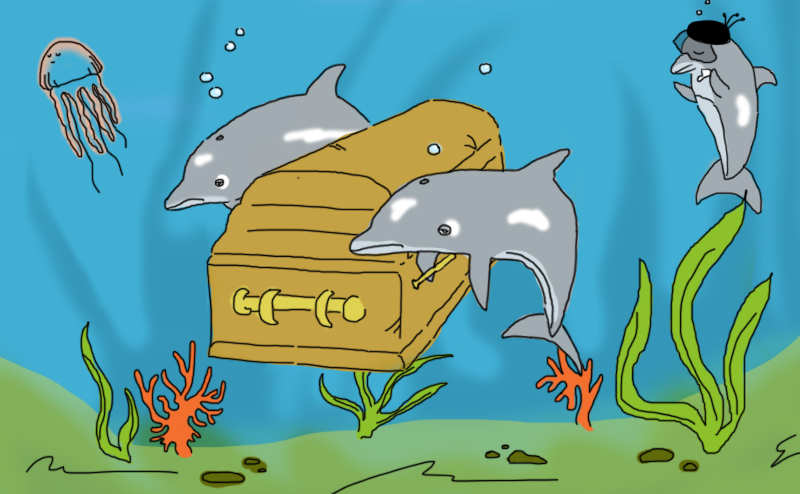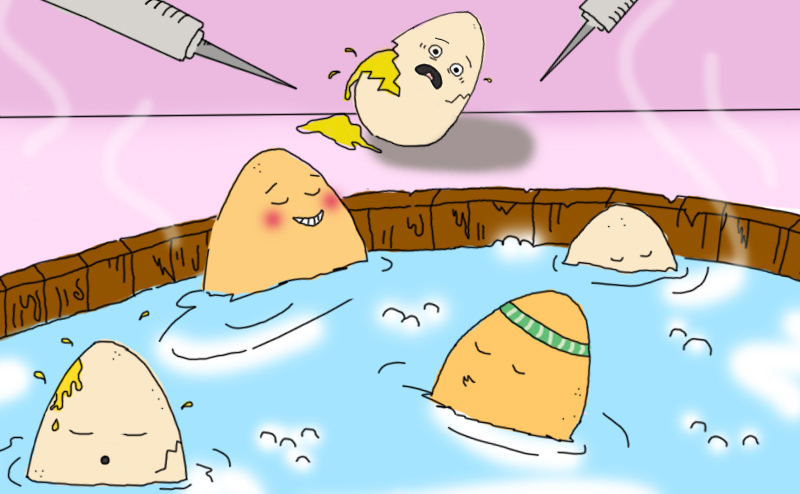Articles
You might have plans to cuddle up with your sweetheart this Valentine’s Day, but it’s probably safe to say they won’t include twisting around each other while hanging upside down from a strand of mucus. Yeah, so that mucus practice is a mating habit of the leopard slug. It’s also a safe bet that none of you ladies out there hoping to spice up your sex life will sense the antics of a female praying mantis and bite off your male lover’s head mid-copulation. Which brings us to the point of this article. When you get down to it, compared to the wide array of plant and animal love out there, human romantic practices start to look a little … vanilla. Tame, if you will. Here’s our attempt to just scratch the surface of the exotic (and sometimes dangerous) ways that other creatures and green things get down.
Read MoreSeven days, lots of science in the news. Here’s our roundup of this week’s most notable and quotable items. New data from the Planck satellite indicates that the cosmic microwave background pattern once thought to be from gravitational waves is an artifact of galactic dust. The first images of Pluto are arriving from New Horizons, the first spacecraft ever to visit the dwarf planet. Ancient microbes may have had a hand in creating the largest known gold reserves on Earth. Researchers have discovered a microbe living at the bottom of the ocean that hasn’t changed in more than 2 billion years. Parts of Iceland are rising as much as 1.4 inches a year thanks to melting glaciers. Chimps can learn different “dialects” of grunts from each other. Artificially stimulating neurons in the suprachaismatic nucleus of the brain could be a way to reset an organism’s biological clock. A woman who reportedly became rapidly obese after treating a bacterial infection in her intestine with a fecal transplant is causing doctors to question whether they need to be more particular in selecting donors. The Hubble Space Telescope snapped pictures of Io, Callisto, and Europa, three of Jupiter’s largest moons, passing across the planet’s face at the same time. A …
Read MoreThink volcanic eruptions, and likely Mount Vesuvius or Mount St. Helens comes to mind. But there’s another eruption in the annals of volcanic history worth knowing about: the 1783 shuddering to explosive life of Iceland’s Laki, which may mark, says journalist Alexandra Witze, one of the first instances of a global consciousness. In their new book Island on Fire, Witze and co-author Jeff Kanipe trace the story of this eruption through modern scientific understanding and detailed historical records. We recently got a chance to speak with Witze about the book. (Note: This interview has been lightly edited for clarity and length.) World Science Festival: What made you want to focus on Laki as opposed to another famous volcanic eruption, like, say, Vesuvius? Alexandra Witze: I actually got into Laki in 2010. I went to Iceland for the first time that summer to do some reporting on the—you know, the really long-named volcano that starts with an E? WSF: Oh! That one—Ey-yah-fee-yokel, right? Witze: Pretty close! Eyjafjallajökull—which I spent a lot of time pronouncing, actually. I was reporting for Science news about why ice-covered volcanoes are so dangerous. When I was there, I was driving around with some University of Iceland grad students who were …
Read MoreIt was a claim so bold, it could not go unnoticed. In March, American scientists using the BICEP2 satellite reported they’d found evidence of primordial gravitational waves left over from the Big Bang. If confirmed, these cosmic ripples would provide strong support for the theory of inflation—a short but explosive spurt of growth that launched the universe.
Read MoreSeven days, lots of science in the news. Here’s our roundup of this week’s most notable and quotable items. Scientists figured out how to unboil an egg by teasing apart the tangled proteins of the cooked egg. A 55,000-year-old skull found in Israel may belong to a close relative of the first humans to move into Europe. Polar bears are catching a bad break—not only are their habitats being threatened by climate change, pollution may be weakening the bears’ penis bones. Nighttime leg cramps are more common in summer. The Mexican government is considering providing drone bodyguards for a rare, endangered porpoise. Newly discovered exoplanet J1407b has a ring system 200 times larger than Saturn’s. The Ebola virus may be mutating. Scientists found that one type of South American scorpion can lose its tail—but in doing so, it also loses the ability to defecate, making its days numbered. Icebergs splitting off of glaciers create unique “acoustic signatures,” meaning researchers might be able to listen to ice to better gauge the extent of melt. Anthropologists mapped all 61 tattoos on Otzi, the 5,300-year-old human mummy found frozen in the Austrian Alps. The U.S. Food and Drug Administration is weighing whether or not to test genetically altered mosquitoes …
Read More“The arc of the moral universe is long, but it bends toward justice.” Martin Luther King Jr. quoted these words of 19th-century abolitionist Theodore Parker at the 1965 voting rights march from Selma, Alabama. Both King and Parker were preachers, but Skeptic magazine founder Michael Shermer argues in his new book The Moral Arc that science is in fact a larger force for good than religion. We got to chat recently with Shermer about science and progress: (Note: This interview has been lightly edited.) World Science Festival: When you talk about science driving the “moral arc,” you’re not saying that scientists are the most effective activists; it’s more that science influences society for the better? Michael Shermer: Yes. I think that we’re all children of the Enlightenment; we’ve all inculcated in our thought processes the idea that people should never be treated as a means to an end but as an end in themselves. You might ask: What’s science got to do with Dr. King’s march to Selma for voting rights? Where were the scientists on the front lines? But I’m not talking about guys in lab coats running experiments. I’m just talking about the idea of reasoning through an …
Read More















